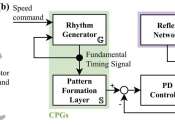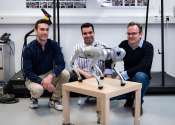A snake robot controlled by biomimetic CPGs
In recent years, a growing number of studies has been aimed at developing robots inspired by nature, particularly by certain species of animals. In a study published in Atlantis Press' Journal of Robotics, Networking and ...









